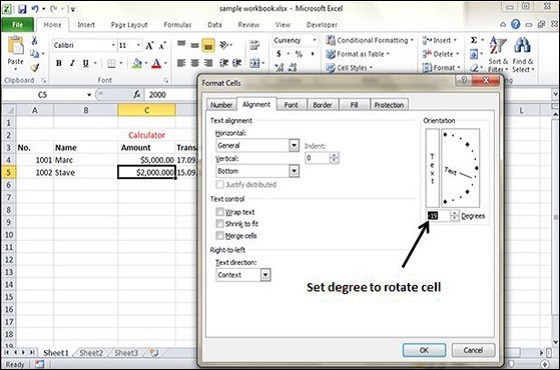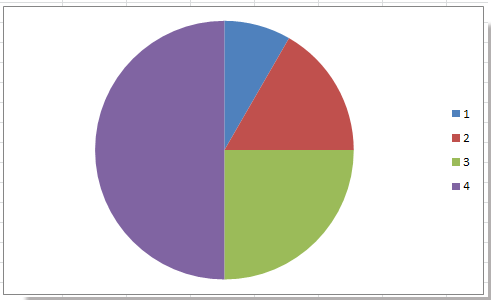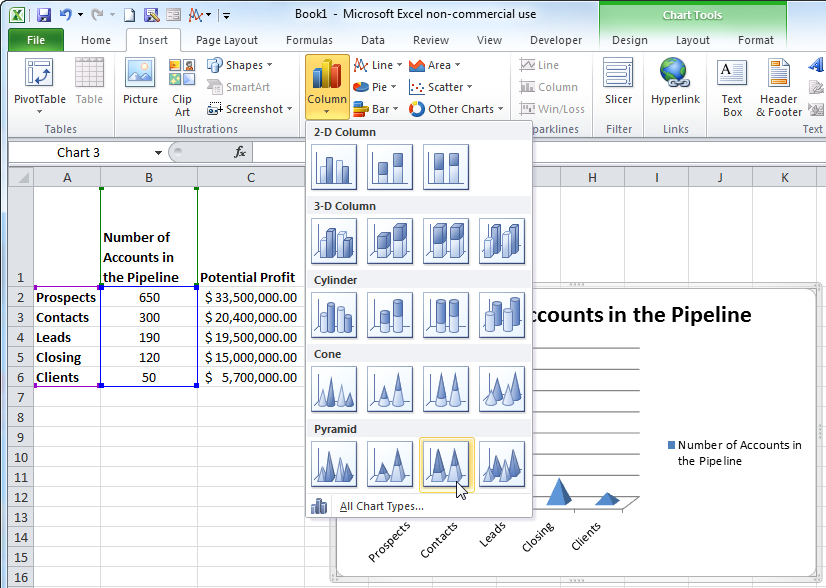
You may need to work on other elements to make the chart nicer, such as label font, bold, size, position, chart title, legends, and borders, etc. The pie now should look like the one below with percentage inside and Category Names outside with Leader Lines.Ĥ. Change the " Angle of first slice" to 64 degrees (or the same degree you set up in step 5) ģ. Right click on the pie chart, then select " Format Data Series" Ģ. Step 11: Rotate to match the first pie chart (In Step 5, the first pie chart rotated 64 degrees) ġ. In the " Format Data Series" window, select " Secondary Axis" Right click on the pie chart, then click " Format Data Series" Ģ. Step 10: Set second chart as Secondary Axis:ġ. In the " Format Data Labels" window, select " value", " Show Leader Lines", and then " Inside End" in the Label Position section Right click on the data label, click " Format Data Labels" in the dialog box ģ.

Right click on the pie chart, click " Add Data Labels" Ģ. Step 9: Add data labels in the NEW pie chart ġ. You should have a pie chart same as below In the " Select Data Source" window, click move down button, the newly copied chart will move up at the same time, you will notice all labels disappeared ģ. Right click on the pie chart, click " Select Data" Ģ. Fortunately it’s easy to create a pie chart in Excel, but occasionally you may want to rotate the individual slices of the chart in a certain direction. Step 8: Move up the newly pasted chart up ġ. A pie chart is a type of chart that is shaped like a circle and uses slices to represent proportions of a whole. This step will generate a second pie chart but you can not see any changes. Copy the first two columns data and paste on the pie chart (right click on anywhere in the plot area but not directly on the pies) Step 7: To create another chart exactly the same on top of this one. Step 6: To have the Leader Lines, drag each of the category names a bit far from the pie Step 5: Rotate Pie Chart: To rotate the pie chart, right click on the pie, select " Format Data Series", adjust the " Angle of first slice" to any degree you need (e.g., 64 degree, this number will be used later) Step 4: "Category Name" and Position: Right click on any data label, and select " Format Data Labels", in the dialog window, check " Category Name", " Show Leader Lines" and then check " Outside End" in the Label Position section.

The data labels were added to the pie chart. Step 3: Add Data Labels to the pie chart: right click on the pie, then click " Add Data Label" Step 2: Delete Legend at the bottom (based on your setting, legend may appear in other position) Select first two columns of data, then in the Insert Tab from Ribbon, click Pie Chart. Step 1: To create a regular pie chart ( see here).

The logic behind is to make two exactly same pie charts but with different labels.įor example, suppose we have the data below and we are going to make a chart with percentage labels inside and Names outside. Rotate between vertical and horizontal presentation of Column, Grouped and Contingency graphs.The Excel does not have a default function to add labels both inside and outside, however, with a few of tips, you can make your chart perfectly with labels in and out.

This choice does not change the aspect ratio of the graph. Click on the Axis tab and select the Secondary axis radio button. Right-click and select Format Data Series. Select a point on the graph for the data set you want to put on the secondary axis. You choice of portrait or landscape only matters when you print the graph from the Graphs section. If you wish to view the step-by-step, click the pic tutorial icon -> or you can follow the steps below. You can also fine-tune that order.įlip between portrait and landscape orientation On Column, Grouped and Contingency graphs, this reverses the left-to-right order. You can fine tune that order in the Format Graph dialog.The two graphs in this example are identical except that the plotting order was reversed. This only matters when data points overlap. You can reverse the order of data sets on a graph, flip the page settings between landscape or portrait orientation, or rotate column graphs from vertical to horizontalįor XY and Survival graphs, this reverses the front to back order of data sets. Select the cells you want to include in your chart. The Rotate/Flip button in the Change section of the Prism toolbar drops a menu with three choices. On your iPhone or iPad, open a spreadsheet in the Google Sheets app.


 0 kommentar(er)
0 kommentar(er)
